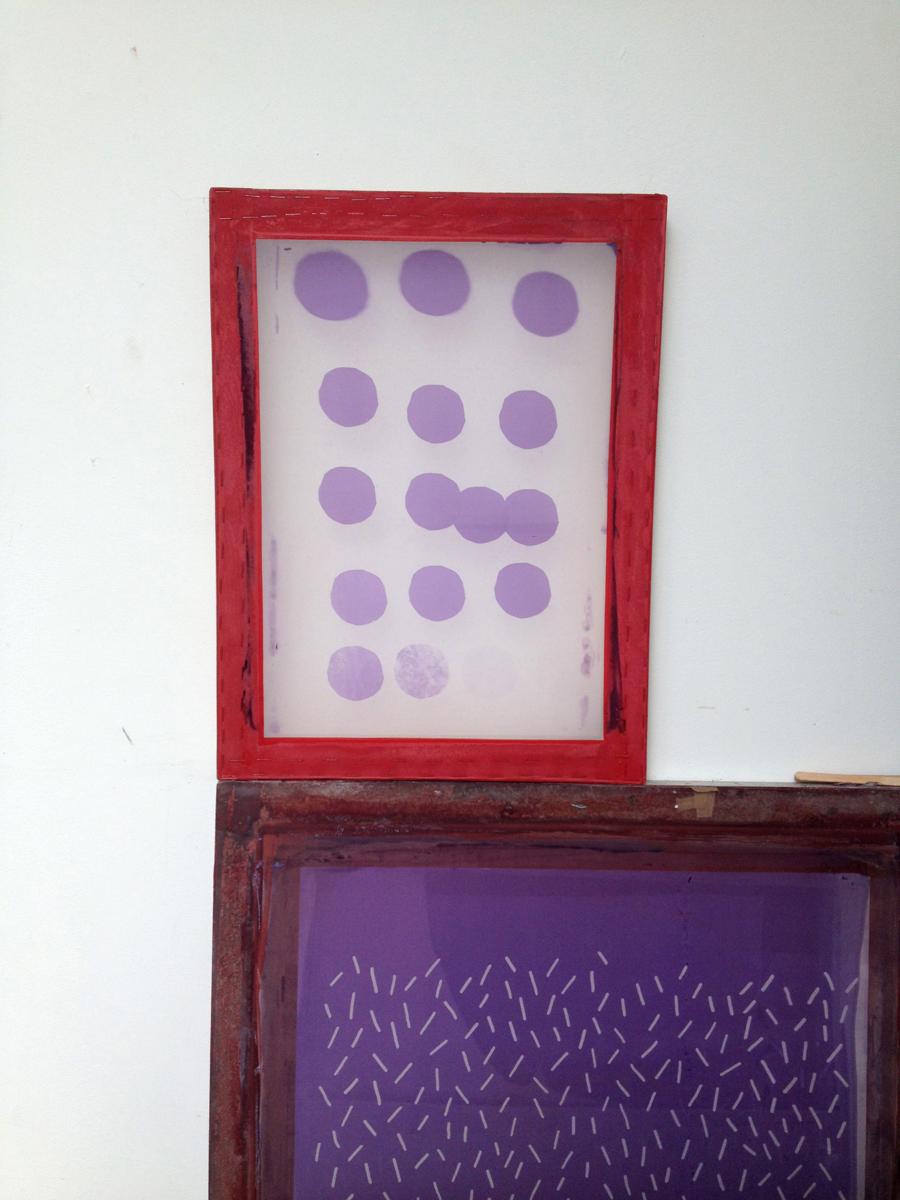Here comes the sun 2.0
to Sacha van den Haak & Felix van Dam’s windowAs a follow–up, Felix did another test with the sun. This time in the morning (10AM) on an equally beautiful day. The light in Felix’ backyard at 10 in the morning would be indirect. The test showed results we expected, knowing what happened last time. The emulsion would be fully hardened at 30 seconds, but what happened in the time before that moment (between 5–25 seconds), sparked our imagination. Because of the weak light the emulsion left a beautiful grey spot on the mesh of the window.

Felix’ steady hand and meticulous working method.
What if we would expose the screen a whole day, capturing all the different kinds of sunlight a day has? When the sun comes up the light is weak, and while it rises the speed of hardening of the emulsion increases exponentially. At the end of the day we could make a print showing all the different shades of that day’s sunlight.
We immediately fell in love with this idea. It fitted the assignment so perfectly. We would only expose the window once and the print would be provided with a pattern of daylight.
We started calculating. When the sun is at its highest the emulsion fully hardens at 5 seconds, and in the morning it will take 25 to 30 seconds. Knowing the sun would probably harden the emulsion at any exposure time when it is at its peak, we thought a longer exposure time could create more extremes in the print. That means we would need a 20 second exposure time. If you want to capture the sunlight of a whole day you need to expose the window for approximately 15 hours (sunrise 6.16 AM, sunset 9.13 PM). Ok. That means 15 hours equals 54000 seconds divided by 20 seconds would bring us to 2700. So we would have to expose the window on 2700 different spots. Hm. This seems a lot. Ok. If you would divide the screen into 15 columns and each column in 180 pieces, the size of each spot would be 6 cm wide and every piece 0,7 cm high.
This will not give enough space to really see what the sunlight’s effect on the emulsion is. Apart from that we would have to make a system that would light all those spots and that would change slots every 20 seconds. This sounds somewhat undoable… I like it!
